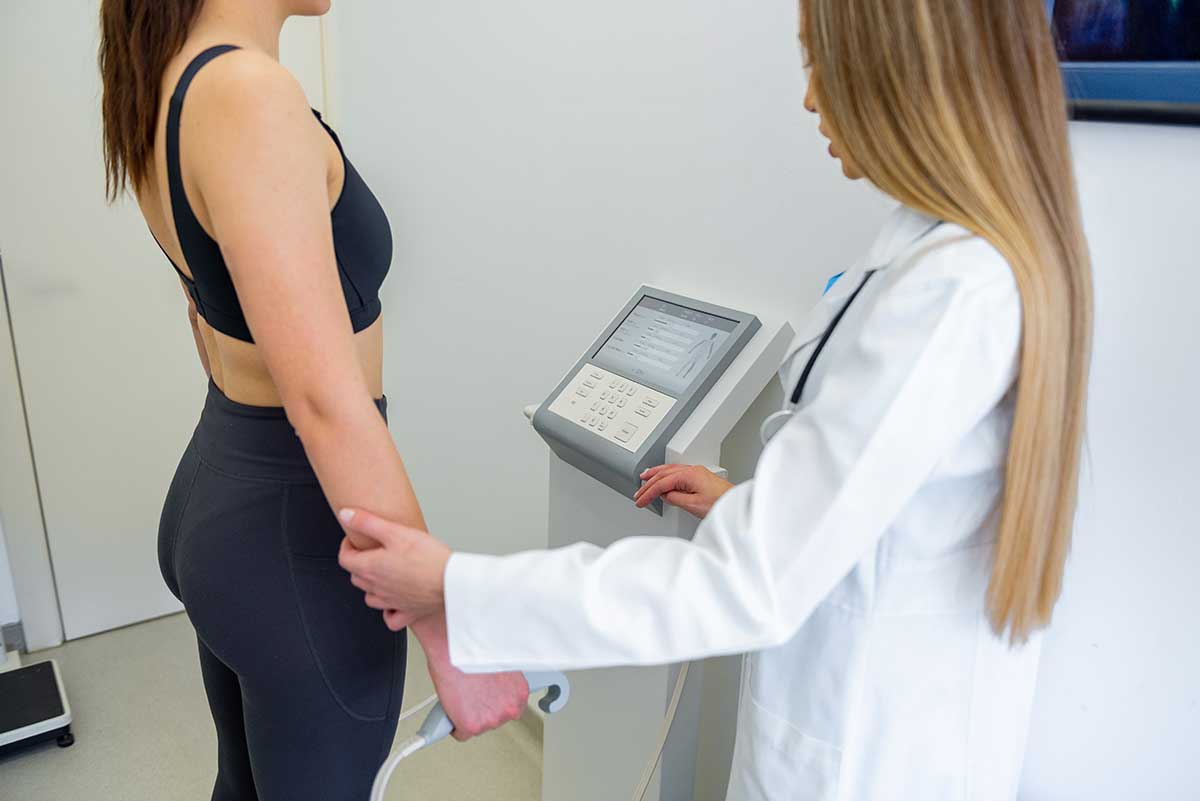
Bioelectrical Impedance Analysis
Watch our video about Bioelectrical Impedance Analysis
Bioelectrical Impedance Analysis (BIA) is a non-invasive test used to measure body composition, including fat percentage, muscle mass, water content, and metabolic rate.
This test is commonly used in nutritional, fitness, and medical assessments to evaluate body health. Unlike standard weight measurements, BIA provides detailed insights into body composition, making it a valuable tool for weight management, sports performance, and medical monitoring.
What is BIA Used For?
BIA serves multiple health and fitness purposes, including:
- Assessing overall body composition, including fat, muscle, and water distribution.
- Monitoring progress in weight loss, muscle gain, or fitness programs.
- Identifying dehydration and fluid imbalances in the body.
- Detecting risk factors for obesity-related conditions.
- Evaluating nutritional status and muscle health in aging individuals.
- Providing guidance for customized diet and exercise plans.
- Supporting medical conditions such as heart disease, diabetes, and metabolic disorders.
By analyzing body composition, BIA helps professionals tailor interventions for better health outcomes.
How Does BIA Work?
The BIA test follows these steps:
- Preparation: The patient stands barefoot on a bioimpedance scale or holds electrodes in their hands.
- Electrical Signal Transmission: The device sends a low-level electrical current through the body, measuring how quickly it travels.
- Data Calculation: The speed at which the current moves varies depending on fat, muscle, and water content, allowing the device to calculate body composition metrics.
- Results Analysis: The test provides information on body fat percentage, lean muscle mass, total body water, and basal metabolic rate (BMR).
The entire process is quick (5–10 minutes), painless, and requires no invasive procedures.
Types of Bioelectrical Impedance Analysis (BIA)
Different BIA methods exist, depending on the technology used and measurement accuracy.
1. Single-Frequency BIA
This is the most basic form of BIA, using a single frequency electrical current to estimate body composition.
It is commonly found in consumer-grade body composition scales and provides a general estimate of body fat percentage. However, it may be less accurate than other BIA methods in detecting precise fat and muscle distribution.
2. Multi-Frequency BIA (Segmental BIA)
This method uses multiple frequencies to provide a more detailed breakdown of body composition.
Multi-frequency BIA can analyze specific body segments (arms, legs, torso) separately, improving accuracy in muscle and fat distribution measurements. It is commonly used in medical and sports performance assessments.
3. Whole-Body BIA vs. Segmental BIA
- Whole-body BIA provides a general assessment of total body fat and muscle mass.
- Segmental BIA offers detailed regional analysis, identifying muscle imbalances between the upper and lower body.
Segmental BIA is more advanced and often used in professional sports and clinical settings.
What Conditions Can a BIA Test Detect?
BIA can help assess and monitor various health conditions, including:
- Obesity and Excess Body Fat – Helps determine excess fat levels and weight-related health risks.
- Sarcopenia (Muscle Loss) – Detects muscle mass decline, common in aging and chronic diseases.
- Dehydration and Fluid Retention – Identifies abnormal water levels in the body.
- Metabolic Syndrome – Assesses risk factors like high body fat and low muscle mass.
- Nutritional Deficiencies – Provides insights into malnutrition and muscle health.
- Bone Density and Strength – Some advanced BIA devices estimate bone mineral content.
- Risk of Cardiovascular Disease – Identifies excess visceral fat linked to heart disease.
When is BIA Recommended?
BIA is recommended in multiple health and fitness scenarios, including:
- Weight Management Programs – To track fat loss and muscle gain progress.
- Sports Performance Analysis – Athletes use BIA to monitor muscle distribution and hydration levels.
- Preventive Health Check-Ups – Routine assessment for obesity, diabetes, and cardiovascular risks.
- Post-Surgery or Injury Recovery – Helps track muscle atrophy and rehabilitation progress.
- Monitoring Chronic Conditions – Useful for diabetics, heart patients, and individuals with metabolic disorders.
- Geriatric Health Assessments – Evaluates muscle mass and risk of frailty in older adults.
- Bodybuilding and Fitness Tracking – Measures lean mass development and fat reduction.
Pre and Post-BIA Care
Before the BIA Test:
- Avoid eating and drinking for at least 3-4 hours before the test.
- Do not consume alcohol or caffeine for 24 hours before the analysis.
- Avoid intense exercise prior to testing, as it may alter results.
- Ensure you are well-hydrated, but do not drink excessive water just before the test.
After the BIA Test:
- Review your results with a specialist, who can provide personalized recommendations.
- Use the analysis to adjust your diet, hydration, and exercise routine.
- Schedule follow-up tests to monitor progress over time.
Contraindications for BIA
Although BIA is safe for most individuals, it is not recommended for:
- Pregnant women, as fluid retention may distort results.
- People with pacemakers or implanted electronic medical devices, since electrical currents can interfere with their function.
- Individuals with severe fluid imbalances (e.g., kidney failure) that may affect accuracy.
- Patients recovering from recent surgeries, as body fluid levels may fluctuate.
In such cases, alternative body composition assessment methods may be necessary.
Alternatives for Patients Who Cannot Undergo BIA
For individuals who cannot take a BIA test, alternative assessment methods include:
- Dual-Energy X-Ray Absorptiometry (DEXA Scan) – Provides high-precision fat and muscle analysis.
- Hydrostatic Weighing – Measures body composition through water displacement.
- Skinfold Calipers – A manual method to estimate body fat percentage.
- MRI or CT Scan – Used for detailed muscle and fat imaging.
Schedule Your BIA Test at Clinic Consultation
Bioelectrical Impedance Analysis (BIA) is available at Clinic Consultation, conducted by trained professionals using advanced technology. Whether you need body composition monitoring, sports performance tracking, or health risk assessment, our experts provide precise and personalized evaluations.
📅 Book your BIA test today and take control of your health and fitness!
Click here to schedule an appointment online